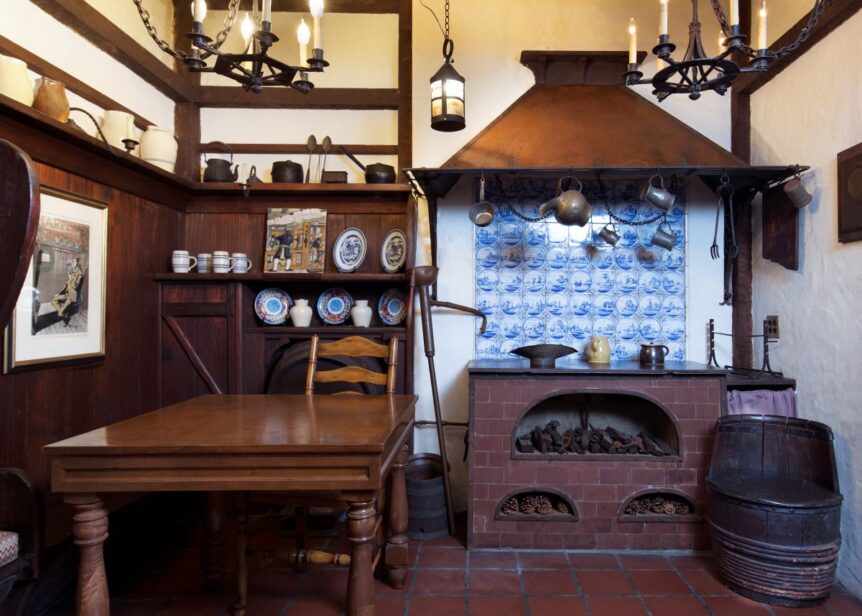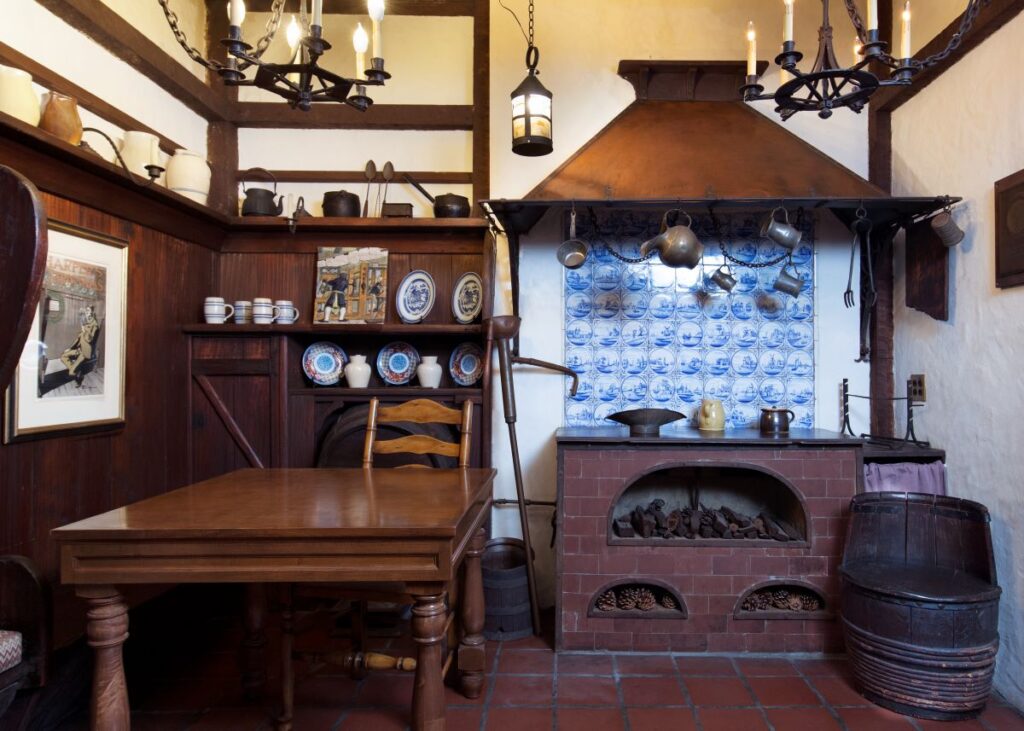
In fall 1895 a heady attraction was unveiled at the Grolier Club, an association of New York bibliophiles then headquartered at 29 East 32nd Street in Manhattan. The brick Romanesque revival clubhouse’s “stiff little colonial grill room,” Leslie’s Weekly reported, had been transformed into a tapperij (Dutch for taproom), inspired by seventeenth-century New Amsterdam antecedents, “dim with the light of tallow dips.” Gleaming copper pitchers, white clay pipes, and blue-and-cream dishware were arrayed under “rough-hewn rafters, grimed and seasoned as if with smoke of decades,” Leslie’s Weekly continued, noting that bulls-eye windowpanes were fitted into the rustic cupboard doors and casement windows, booze flowed from a cask, and firewood fueled “the Dutchest of Dutch ovens” backed in blue-and-white Delft tiles. Tuxedoed clubmen looked like “fantastic anomalies,” the magazine added, while partying in the throwback tapperij where it was easy to imagine “Peter Stuyvesant himself. . . quietly taking his schnapps with a group of friendly burgomasters . . . . New York faded away and became some unreal, Utopian dream.”
The tapperij, a testament to the Gilded Age’s fascination with New York’s earliest days and the Knickerbocker aristocracy, is now a prized period room on the fourth floor of the Grolier Club’s current headquarters at 47 East 60thStreet. New scholarship and restoration work have shed light on its origins, contents, and evolution.
Grolier Club member Frederick A. Castle, a physician and historian, designed the tapperij. Its high-backed banquettes in seventeenth-century style were also pragmatic, maximizing open space for banquets of chestnut-stuffed poultry, broiled quails on toast, and “escallope of oysters.” William Shannon Miller, a German-American builder whose father, Anton, ran a steakhouse in lower Manhattan, was hired to realize Castle’s romanticized colonial scheme. (Grolier members also employed the Millers to cater parties, serving beefsteak on slabs of bread.)
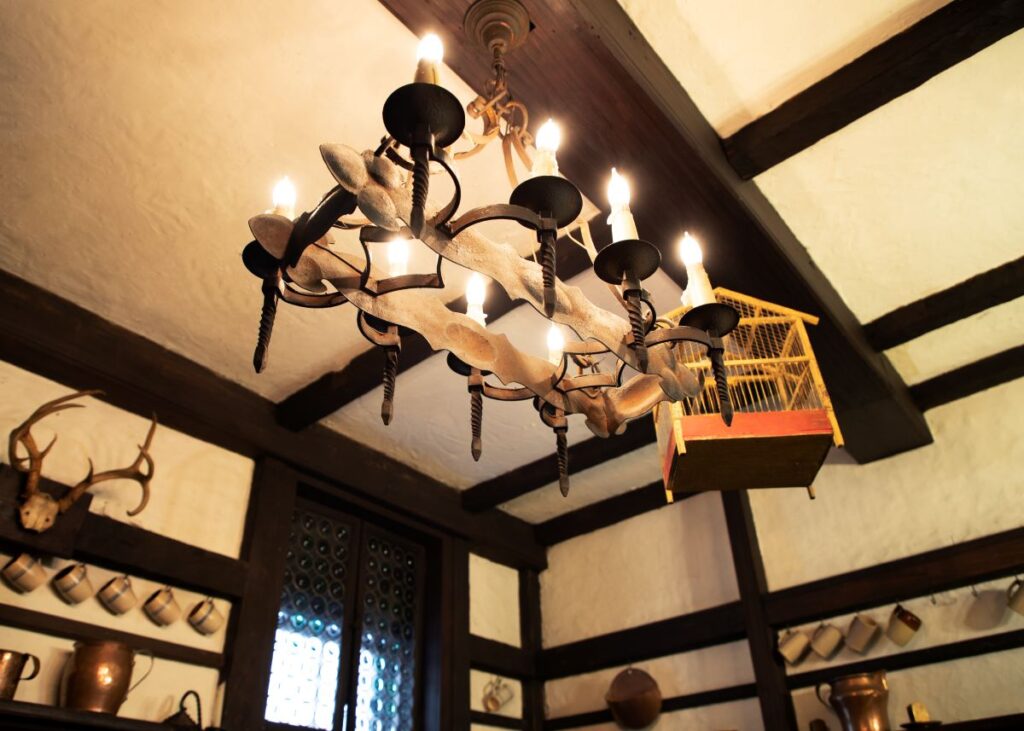
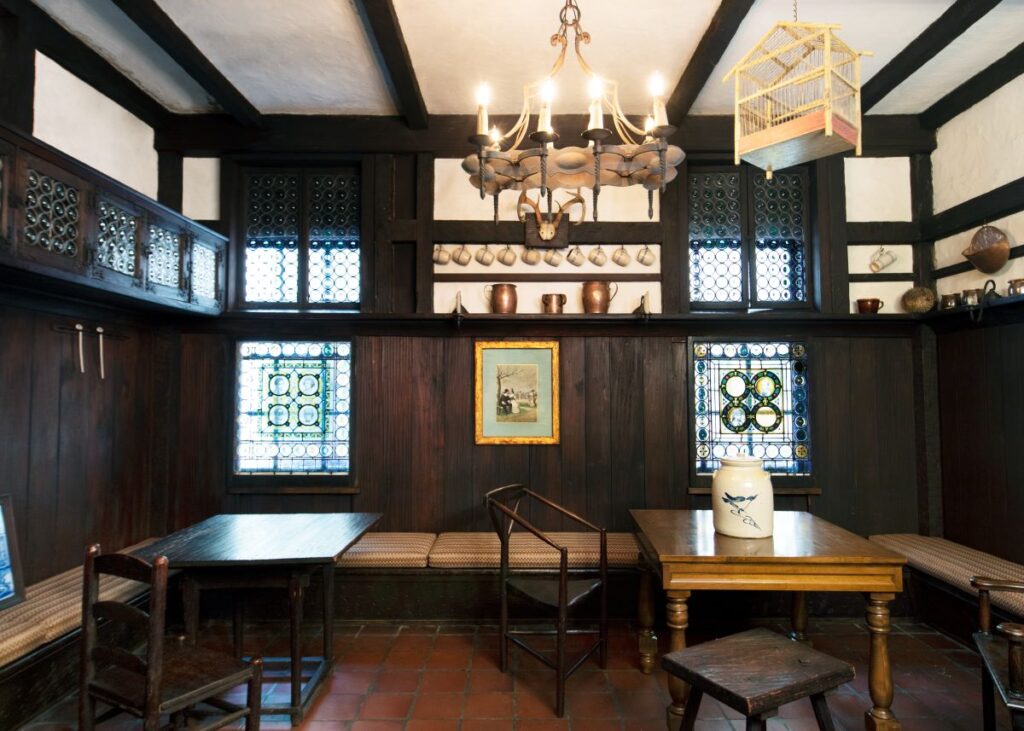
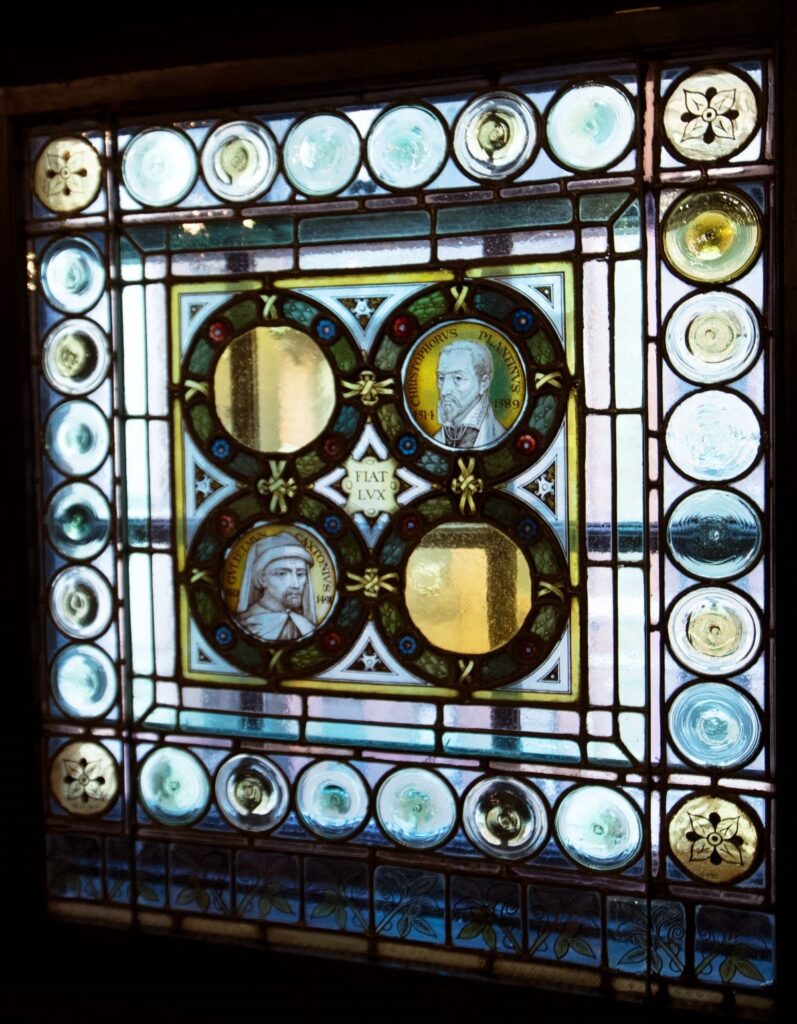
At the 32nd Street clubhouse, angled planes of calcimined canvas were hung along the ceiling, to make the second-floor space seem tucked under the eaves. Heating pipes were concealed by perforated panels under the settees. Gouged woodwork, knobby floorboards, and hammered wrought-iron hardware seemed fashioned by “a peasant with simplest tools,” as befit an organization devoted to “honest and artistic workmanship,” according to the club’s annual report of 1899. (Grolier members focused then, and still do, on preserving and promoting the legacy of the highest echelons of designers and makers in the realms of printing, typography, papermaking, and bookbinding.)
“No sacrilegious hand” was allowed to disturb any mellowing coats of “soot and tobacco smoke,” House and Garden noted. Sand was strewn on the floor, and devotees suggested requiring wooden clogs as footwear in the room. Grolier members kept adding antiques and oddities to the tapperij: wooden signs with Dutch inscriptions, “an age-darkened violin,” a gabled wooden birdcage, a dried blowfish, a copper wine siphon, a wooden musket, cantilevered metal candlesticks, and a colorful Dutch clock. A motley group of chairs included triangular and barrel-shaped examples. Among the “crockery” gifts was a gray-brown stoneware jar made around 1800 by the free Black ceramist Thomas Commeraw, who ran a pottery on the Lower East Side. The vessel, decorated with cobalt swags and tassels, is now on view as part of a Commeraw exhibition that debuted in January at the New-York Historical Society. Margi Hofer and Allison Robinson, the show’s curators, rank the Grolier Club’s acquisition as “the first documented instance of a Commeraw pot collected for display.”
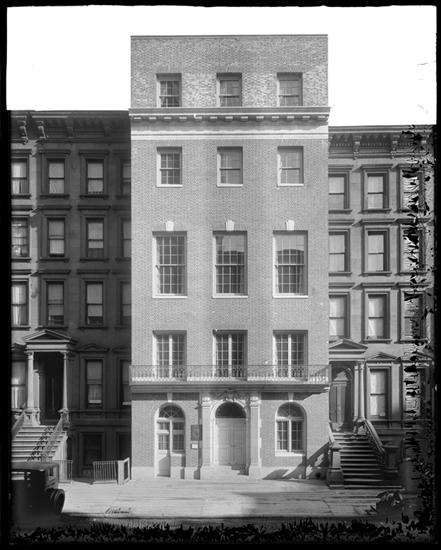
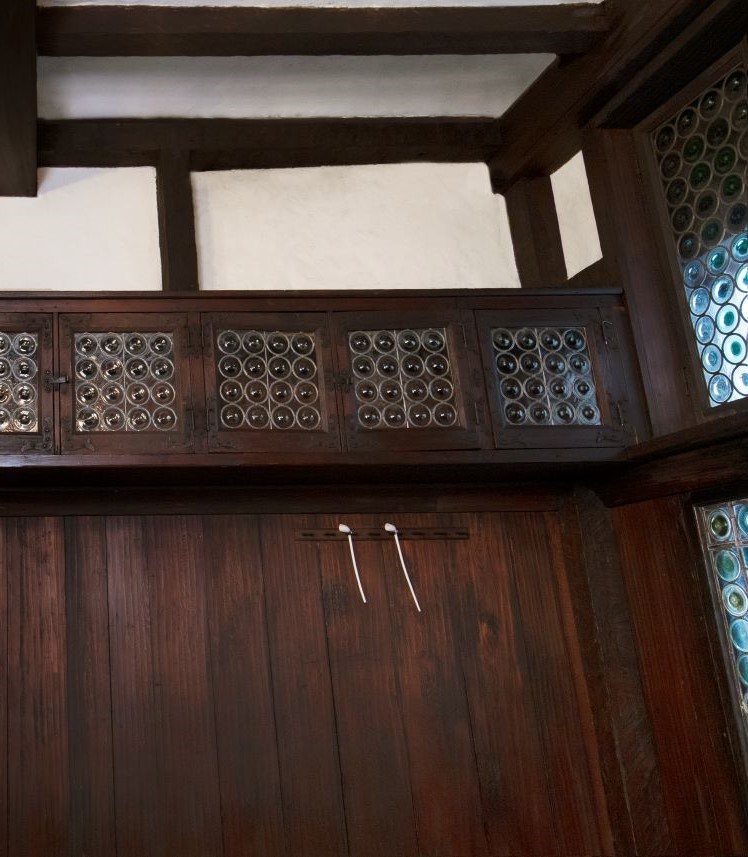
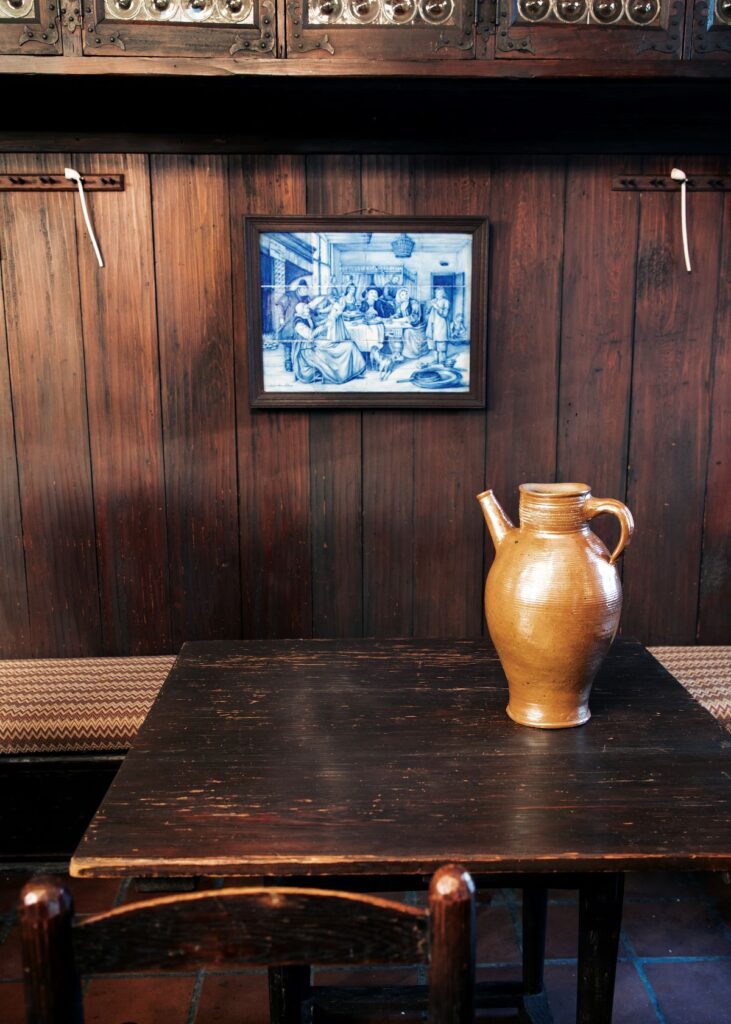
During the club’s 1917 move to its current home (a Georgian revival building designed by Grolier member Bertram Grosvenor Goodhue), the tapperij was dismantled and its components hauled northward. The sloped canvas ceiling was replaced with flat plaster, and tiles were laid underfoot. Stained-glass portraits of eminent European printers and bibliophiles, made for the 32nd Street building’s entryway, were added to the Wunderkammer. Yet the punch served at parties remained “as strong as the firmest binding,” the New York Herald reported. One scholar who had been invited upstairs recalled maneuvering “to avoid the tallow that drips from the candles overhead.”
The cupboards and windows have been repaired by Venturella Studio of upstate New York, and the clock has been reactivated by Manhattan expert John Metcalfe. A recently donated birdcage, resembling the long-lost original, dangles from the ceiling. Dutch-flavored artworks have been hung between pipe racks, such as Edward Penfield’s 1897 poster for Harper’s magazine, depicting a man reading in the tapperij. And the wow factor endures. Jaws still drop as new arrivals to the fourth floor set foot inside an illusion of an atmospheric pocket of New Amsterdam, complete with birdcage and blowfish.
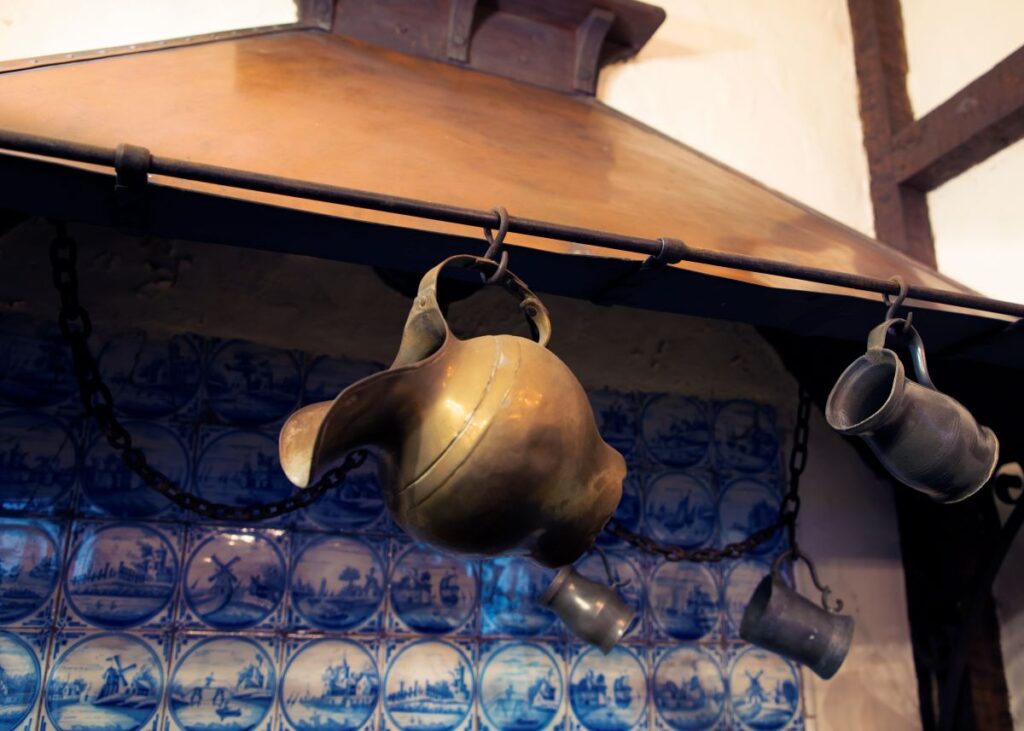
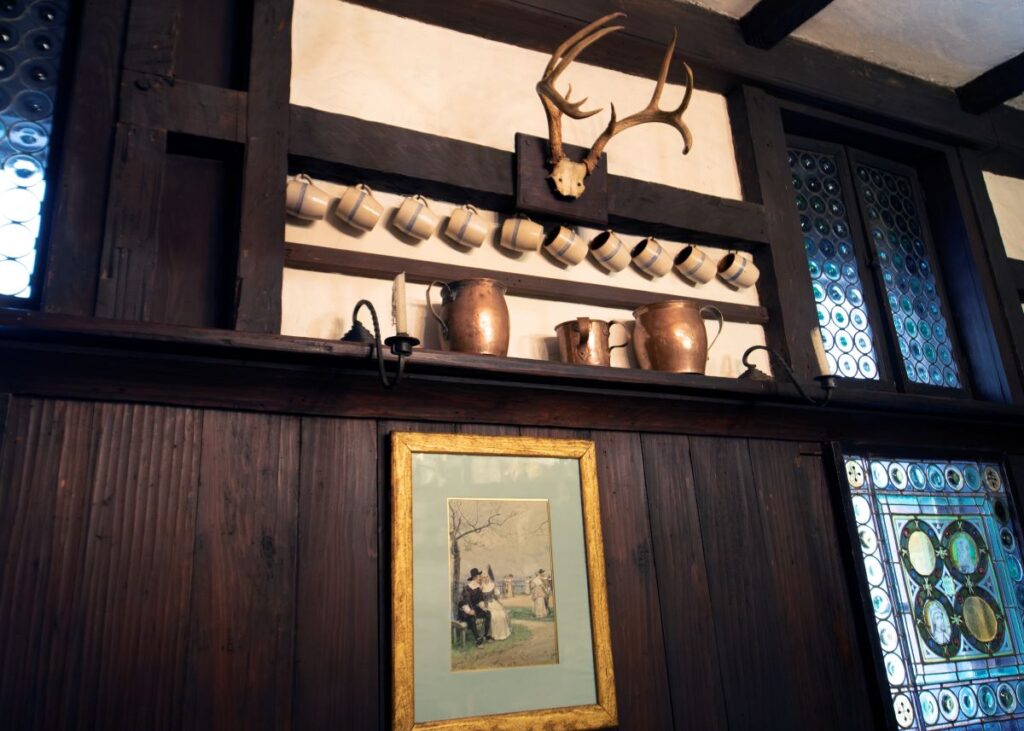
For information on public tours see the Grolier Club’s listings at Eventbrite.com.

